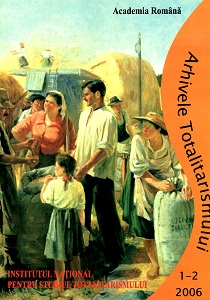Rezistența armată din România, 1948-1958: O încercare de tipologie
Armed Resistance - The Real Opposition to Romania’s Communization
Author(s): Adrian BrișcăSubject(s): Military history, Political history, WW II and following years (1940 - 1949), Post-War period (1950 - 1989), History of Communism
Published by: Institutul National pentru Studiul Totalitarismului
Keywords: Romania’s Communization; Anticommunist resistance;
Summary/Abstract: Anticommunist resistance manifested in various forms. There was passive resistance and active resistance; individual resistance, either covert (economic sabotage) or open (public agitation); unarmed but organized subversive resistance and many paramilitary organizations waiting for the right moment to act, as well as a strong armed resistance. The latter type spearheaded the resistance movement against the communization of Romania. Men and women alike espoused a dignified and courageous attitude, choosing to take to the mountains and the woods, to fight and die fighting rather than die in the communist jails. The anticommunist resistance movement had a Christian and monarchist character. Its spread over the entire territory and its heterogeneous social and political composition lent it also a national character. Members and supporters of the Peasant Party and army men fought side by side with Legionnaires, students and peasants against the common enemy. There were then those who supplied food, equipment, intelligence and sometimes even housing, those who practiced economic sabotage individually and, in a way, the majority of the Romanians, who trusted the Americans would come to liberate them.
Journal: Arhivele Totalitarismului
- Issue Year: XIV/2006
- Issue No: 1-2
- Page Range: 178-183
- Page Count: 6
- Language: Romanian
- Content File-PDF

